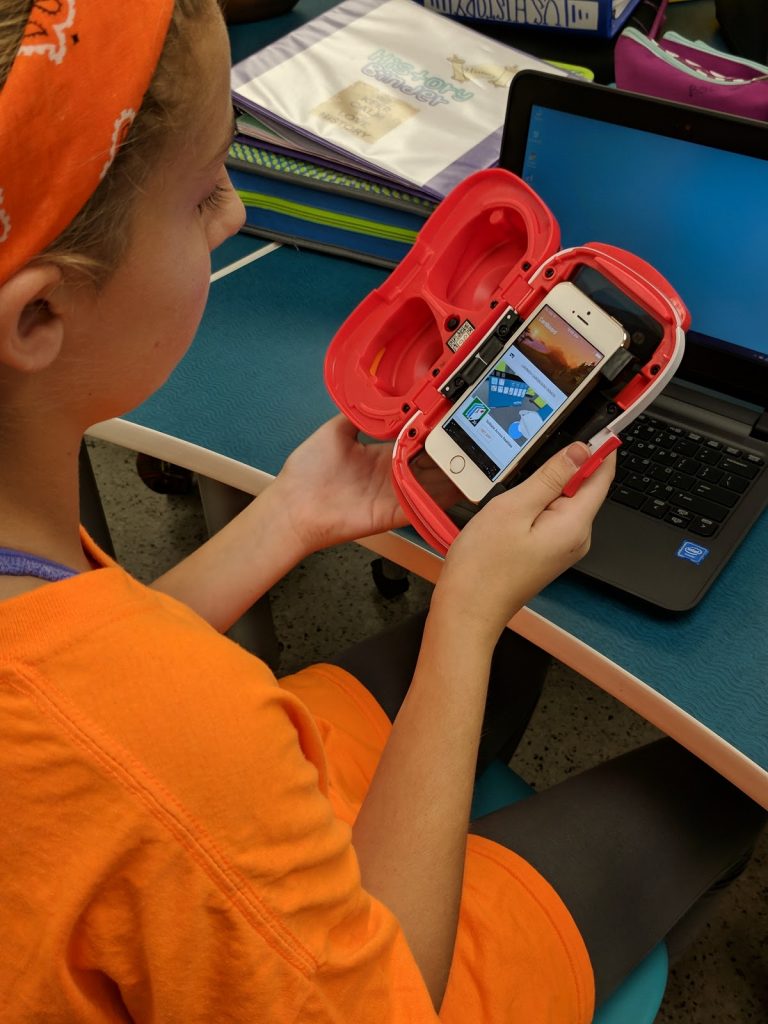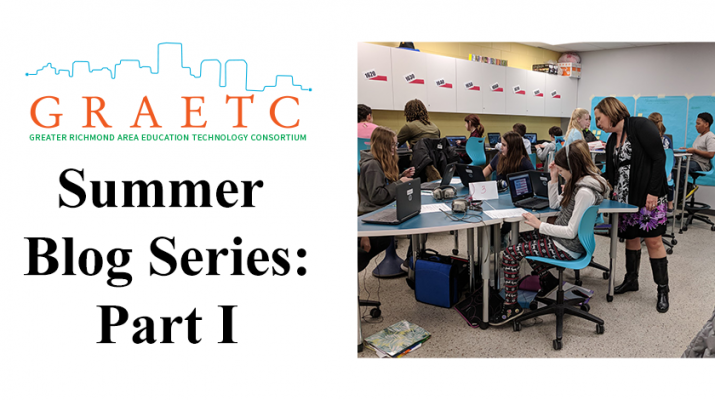GRAETC will publish a multi-part blog series over the summer which will highlight the efforts of three Hanover County Public School teachers who have transformed learning spaces to empower students and to amplify learning with help from the grant funding of Hanover Education Foundation and community partners. In Part I: Renovating a Classroom and Revitalizing My Teaching, middle school teacher and guest blogger, Melissa Larimer, shares the changes that happened and her successes.
My classroom renovation transformed not only my teaching, but also the way I perceive my role in the classroom. For much of my career, I thought that in order for students to learn something, they had to hear it spoken or see it written. However, for the past few years as I integrated technology more and more in my room, I learned that students are most capable and best able to showcase their intelligence when given activities that peaked their interest.
This school year, my sixth grade History students participated in some awesome adventures! Rather than memorizing the setting, climate, and location of Native American tribes, my students created a Survival Plan for their assigned tribe with the assumption that they were dropped in a location wearing only their gym suits and no other supplies. After each tribe researched and presented their plan to the class and building administrators, we voted together to determine which tribe was most likely to survive. We covered the same Standards of Learning and used the same amount of class time; however, rather than seeing glassy eyes and note-copying zombies, I watched enthusiastic, engaged students beg me for a pass to come back to my room during their free time to keep working.
This year my students visited arctic Alaska, the Pacific Northwest coast, and the Great Plains. We toured Independence Hall in Philadelphia and Appomattox Court House in Central Virginia. All of the “Keepers of the Budget” should be very impressed to learn that we did all of this using virtual reality, so it cost the school system and the students nothing!
Thanks to a grant from the Hanover Education Foundation, my classroom is now equipped with rolling desk chairs, wobble stools, standing desks, a class set of laptops, a dozen iPhones, and virtual reality glasses. We have lights on two different switches with dimmers and storage galore. All of these supplies produced a transformational affect on student learning this year.
 Rather than hearing questions that start with, “Do we have to…?”, I’m hearing questions that start with, “Do we get to…?” “Mrs, Larimer, do we get to use the VR glasses today?” “Mrs. Larimer, do we get to use our phones today?” For middle schoolers, consistent and reliable access to technology was exciting and engaging. It enabled students to transition from memorizing information to actually learning it. Opportunities for creativity, innovation, and originality were presented to my students this year that were not available in the past.
Rather than hearing questions that start with, “Do we have to…?”, I’m hearing questions that start with, “Do we get to…?” “Mrs, Larimer, do we get to use the VR glasses today?” “Mrs. Larimer, do we get to use our phones today?” For middle schoolers, consistent and reliable access to technology was exciting and engaging. It enabled students to transition from memorizing information to actually learning it. Opportunities for creativity, innovation, and originality were presented to my students this year that were not available in the past.
I spent this school year questioning everything I have ever done as a teacher. I looked critically at every lesson I taught and asked myself, “Is this really the best way? Is there a better way to do this? How can I get my students more actively involved in this lesson?” The opportunity for each student in my classroom to choose a device, be it a phone or a laptop, forced me to realize that my lessons needed adaptation. Every choice I made for my students this year moved us closer to a truly student-centered classroom, where student voice and choice were the determining factors in how students learned the curriculum.
It was that change, more than any other, that propelled us as a Classroom of the Future. Future classrooms will exhibit technology, for sure, and probably types of technology that I can only dream about at this point. However, it is my opinion that classrooms of the future will be places of individualized learning, where standards are only a guideline and student creativity can be unleashed. Our county is working towards that goal as we move forward by providing one-to-one devices to each of our secondary students and as the Hanover Education Foundation continues to support the Classrooms of the Future initiative. I look forward to seeing what the future looks like in Hanover County Schools. From where I am standing, it’s looking pretty bright.
Authorship Information:
Melissa Larimer is one of the recipients of the 2017-2018 Classroom of the Future Grant. This is her 14th year as a classroom teacher in Hanover County. She currently teaches US History to middle school students in Hanover. She previously served for eight years as a Special Education teacher at the elementary and middle school levels in Hanover and New Kent County. Melissa is a National Board Certified teacher and a lifelong learner who constantly seeks out ways to improve her instruction. In her free time, she enjoys spending time with her husband and young son.

